CHP1
Imprint® Chromatin Immunopreciptitation Kit
Complete ChIP reaction in 6 hours in flexible strip well format
Sinónimos:
Chromatin Immunoprecipitation
About This Item
Productos recomendados
storage temp.
−20°C
Categorías relacionadas
General description
For Frequently Asked Questions about this kit, please see ChIP Troubleshooting Questions.
Application
- Suitable for downstream applications
- Individual target characterization to genome-wide profiling techniques
- Characterization of signal transduction pathways
- Verification of ChIp-chIP and ChIP-seq data
Features and Benefits
- Fast—Total protocol time of less than 6 hours making the Imprint kit the fastest on the market
- Sensitive—As few as 10,000 cells required for each ChIP sample
- Convenient—Fewest steps of any available ChIP protocol
- Flexible—Protocols for cells or tissue, and convenient strip-well format for high-throughput applications
- Complete—Includes columns and reagents for DNA purification as well as an integrated protocol for amplification with the GenomePlex technology
Legal Information
Los componentes del kit también están disponibles por separado
related product
signalword
Danger
Hazard Classifications
Acute Tox. 4 Oral - Aquatic Chronic 3 - Eye Irrit. 2 - Flam. Liq. 2 - Met. Corr. 1 - Resp. Sens. 1 - Skin Irrit. 2 - STOT SE 3
target_organs
Central nervous system
Storage Class
3 - Flammable liquids
flash_point_f
53.6 °F - closed cup
flash_point_c
12 °C - closed cup
Certificados de análisis (COA)
Busque Certificados de análisis (COA) introduciendo el número de lote del producto. Los números de lote se encuentran en la etiqueta del producto después de las palabras «Lot» o «Batch»
¿Ya tiene este producto?
Encuentre la documentación para los productos que ha comprado recientemente en la Biblioteca de documentos.
Los clientes también vieron
Protocolos
Chromatin Immunoprecipitation qPCR for studying gene regulation across conditions.
Chromatin Immunoprecipitation qPCR for studying gene regulation across conditions.
Chromatin Immunoprecipitation qPCR for studying gene regulation across conditions.
Chromatin Immunoprecipitation qPCR for studying gene regulation across conditions.
Nuestro equipo de científicos tiene experiencia en todas las áreas de investigación: Ciencias de la vida, Ciencia de los materiales, Síntesis química, Cromatografía, Analítica y muchas otras.
Póngase en contacto con el Servicio técnico















